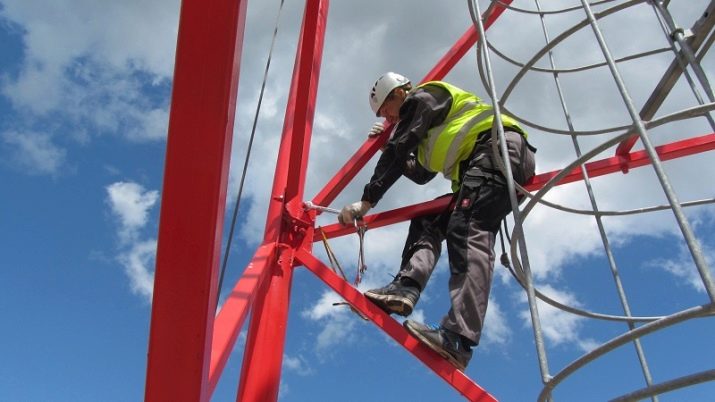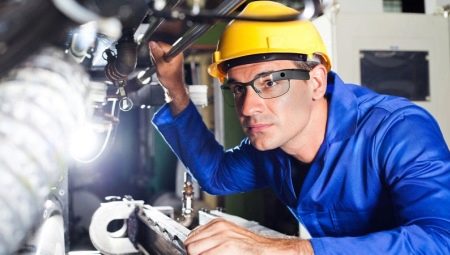The installer is one of the most “busy” professions. This is the link on which any company that carries out the construction and maintenance of various technical facilities is supported. We will talk about how to create a resume for a specialist of this kind of activity in the article.
Resume structure
Like any resume, the applicant’s application for the installer’s vacancy is divided into blocks: personal data and information about acquired key skills. Depending on the nature of the job, the job is awaiting the job applicant when the vacancy is closed by him (upon approval of this candidacy by the senior manager or department head), in the summary indicate:
- personal data (F. I. O., age and gender, mobile number and e-mail);
- data on education (secondary, vocational, higher, university name, years of study, specialty);
- work experience (name of the previous company and years of work, job duties);
- data on continuing education (name and essence of special courses, assigned certificate, new qualification, date of additional training);
- personal qualities - traits and abilities that talk about how a person finds a way out of emergency situations, organizes and optimizes his work;
- professional skills.


The general rules and contents of the resume for installers of different profiles generally coincide. But the listing of skills has in each of the specific cases some features.
- For installers of cellular equipment and climate technology (installation of split systems), fiber-optic and telephone house lines, external house wiring, boiler room elements, an industrial climber's certificate is required. They have to work “steeply” - at a height of more than a dozen meters (facades, side load-bearing walls of buildings). Here the slightest omission - for example, insufficiently fixed stops and suspensions - may cost the master of life. It confirms the right of access to work at high altitude. Mast antennas working on regional and district television towers (RTPC towers) fall under the same restrictions. And although it is possible to use a truck crane, the contractor is unlikely to hire such a machine. Especially when the work is comparable or less at the rental price of the truck crane itself, then it is cheaper for an individual company to send a professional "climber" than to hire a special elevator or build a temporary elevator.
- Almost all installers - heating, ventilation, air conditioning systems, steel and reinforced concrete structures, windows, doors, shutters, swing and sliding gates, barriers (and other massive and bulky assemblies) - must be physically strong and tough, because it is not only about bringing tools and sliding ladders to the place of work, but also moving, installing prefabricated sections, each of which weighs more than one kilogram . A vivid example is PVC windows: even a sash of such a window weighs more than 10 kg (together with a double-glazed window). However, such work is best done in the team. A typical example is fitters-fitters working with heating networks, water and gas supply. They are united in teams of several workers — when it comes to, say, replacing a whole section of a leaky heating main.
- The installer of low-current systems, high-precision and "delicate" electronics (REA) must also be hardy, stress-resistant, decisive. He also works on an absolute result, is easily guided in the drawings and diagrams of the project. Such a master should be able to find solutions from non-standard situations. The fact is that electronics (for example, OPS) sometimes have the ability to freeze in the presence (presence of nearby) noise, improper assembly, and a significant violation of the structural and technological schemes. Correct installation is half the success of commissioning. In essence, these same qualities are also required in CVs and other installers.
- Working with stretch ceilings requires extreme clarity and accuracy. Installation of the canvas can be done by one (in a small room, in the corridor), but in the case of large rooms it is better to work together.
The same applies to the installation of pure metal doors, cable ducts, pipelines, elevators, as well as professional refrigeration and freezing equipment for hypermarkets and cafes.

Tips
When preparing a resume, it is important to adhere to a number of rules.
- The resume should be easy to read.. Remember that a recruiter will not have to sort one resume for an hour or more. He must look through dozens of them per day - select those that most fully meet the expectations of the company. Font, line spacing, brevity and completeness of content, division into sections, presentation style - formalities informing the company employee that the applicant is a mandatory and accurate person.
- List responsibilities in your previous position briefly, but comprehensively. They should not be at variance with experience gained.
- If you have changed a dozen jobs - there is no need to indicate everything. List the most significant.
- Do not ignore the received higher, additional education. Mention your courses.
- Attaching a photo card, make sure that it is exclusively business style. You should not publish too frank photos.
The best resume does not take more than one page. No information is needed on five different specialties that are not complementary. Excessive and obscured definitions of your qualities, such as “active” and “purposeful,” are also not required. Explain them more fully.
In exceptional cases, you can briefly cite a couple of specific examples in which you show your qualities of an excellent employee clearly - but do not abuse it.

Example
An ideal resume sample is provided below.
FULL NAME.: Petrov Ivan Albertovich
Address of residence: Rostov-on-Don, 73 Malinovsky pr.
Date of Birth: 02/09/1982
Vacancy requested: installer, commissioner of low-current systems.
Achievements and skills: experience in monitoring the work of a team of craftsmen, professional installation of low-current systems for at least 6 years, I can handle power tools and equipment, I can easily navigate the design documentation.
Higher education: Don State Technical University, 2001–2006, major in radio electronics, faculty of Radio Electronics and Multimedia Technologies.
Experience: 2012–2019, LLC Agroelektroservis, position: installer of low-current systems.
Job functions: coordination and control of the work of teams, installation of access control and management systems, security and fire alarms. Work with instrumentation, summing up power and signal lines.
Achievements: assigned electrical safety group - III.
Skills gained: the ability to work with teams of masters, an "advanced" PC user, laying communication and wiring lines, installing, connecting and setting up electricians and electronics.
Personal qualities: high level of responsibility, punctuality in the execution of approved plans, quick and clear work on the result.











